Stratasys Separator DM for Acrylic Orthodontic Appliances
Stratasys’ Separator Digital Material (Separator DM) is a novel 3D printing material blend designed to simplify the production of acrylic orthodontic appliances. In essence, it acts as a built-in separating medium that is printed as a thin coating into the outer surface of dental models to allow acrylic devices (like Hawley retainers) to release cleanly from the model.

Unlike conventional separator techniques (tin foil sheets or liquid coatings applied to models), Separator DM is integrated during the 3D print itself. It is a specially formulated digital material, achieved by mixing a standard model resin (Stratasys MED620 dental model material) with the dental support material (Stratasys SUP711) in the PolyJet printing process. The resulting micro-thin layer “infuses with the model resin” and prevents the acrylic from bonding to the model. This coating is just thick enough to act as a barrier, but it’s essentially invisible to the naked eye and does not compromise the model’s accuracy or strength.
By printing this separator layer directly on the model, any acrylic appliance you fabricate on that model will pop off easily once cured, along with any wax or residue, leaving a clean model surface.
Separator DM is available on the flagship Stratasys J5 DentaJet and also on the compact J3 DentaJet for smaller labs. Both printers leverage PolyJet multi-material technology – the J5 can jet up to 5 materials at once, and the J3 up to 3 at once, which is what enables a mix of model resin and support to be printed together as a digital material coating.
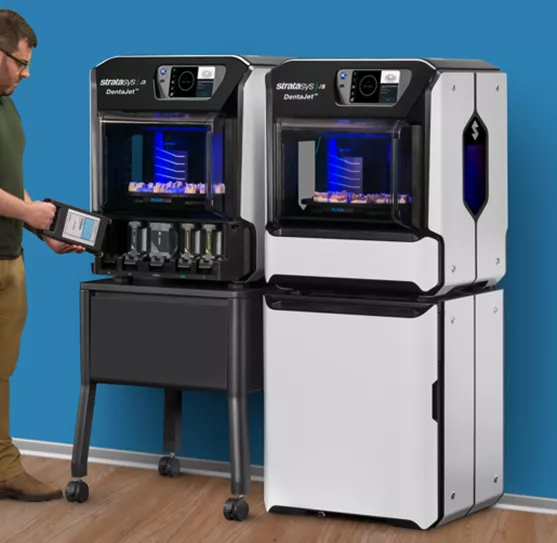
The Stratasys J3 and J5 DentaJet 3D Printers
How Does Separator DM Function?
Essentially, the outer ~0.1–0.3 mm of the printed model’s surface is composed of a blend rich in support material, while the interior is printed in standard model resin. The support-rich skin ensures that acrylic and wax do not stick to the model’s surface, similar to how a thin foil or separator film would, but without any manual application. The coating is designed automatically by the GrabCAD Print software when you select the Separator DM option for the print job – no extra CAD modeling or post-processing steps are needed to add the layer. This automation is a key benefit: the printer effectively “paints” the entire model with a uniform separating layer as it prints.
Stratasys’s build preparation and slicing software, GrabCAD Print, provides multiple Separator DM variants to fine-tune the coating. These presets adjust the coating thickness and the ratio of support in the mix. For example, the standard ASR-620 uses ~0.1 mm coating at a 70/30 support-to-model ratio, but there are options up to 0.3 mm thick and up to a 90/10 ratio for an even easier release.
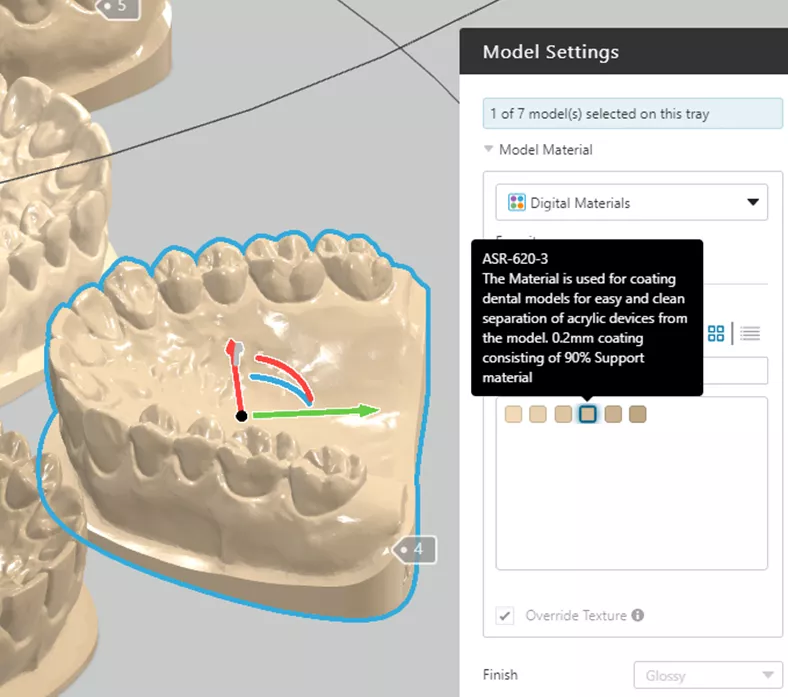
Applying One of the Six Different Separator DM Configurations is simple in GrabCAD Print
One of the most attractive benefits of Separator DM is the minimal post-processing the parts require after printing, especially compared to typical PolyJet prints. Normally, PolyJet models require washing or water-jet blasting to remove the support matrix from all surfaces.
With Separator DM models, you should NOT soak or water-jet them. Doing so could erode the delicate separator layer. Instead, use a small pick or spatula to scrape away the support from the bottom of the model and any deep recesses (like undercut areas on tooth anatomy). A soft toothbrush can be great for removing any remaining support residue from the tooth surfaces and grooves. The key is to keep the separator-coated surfaces relatively dry and intact.
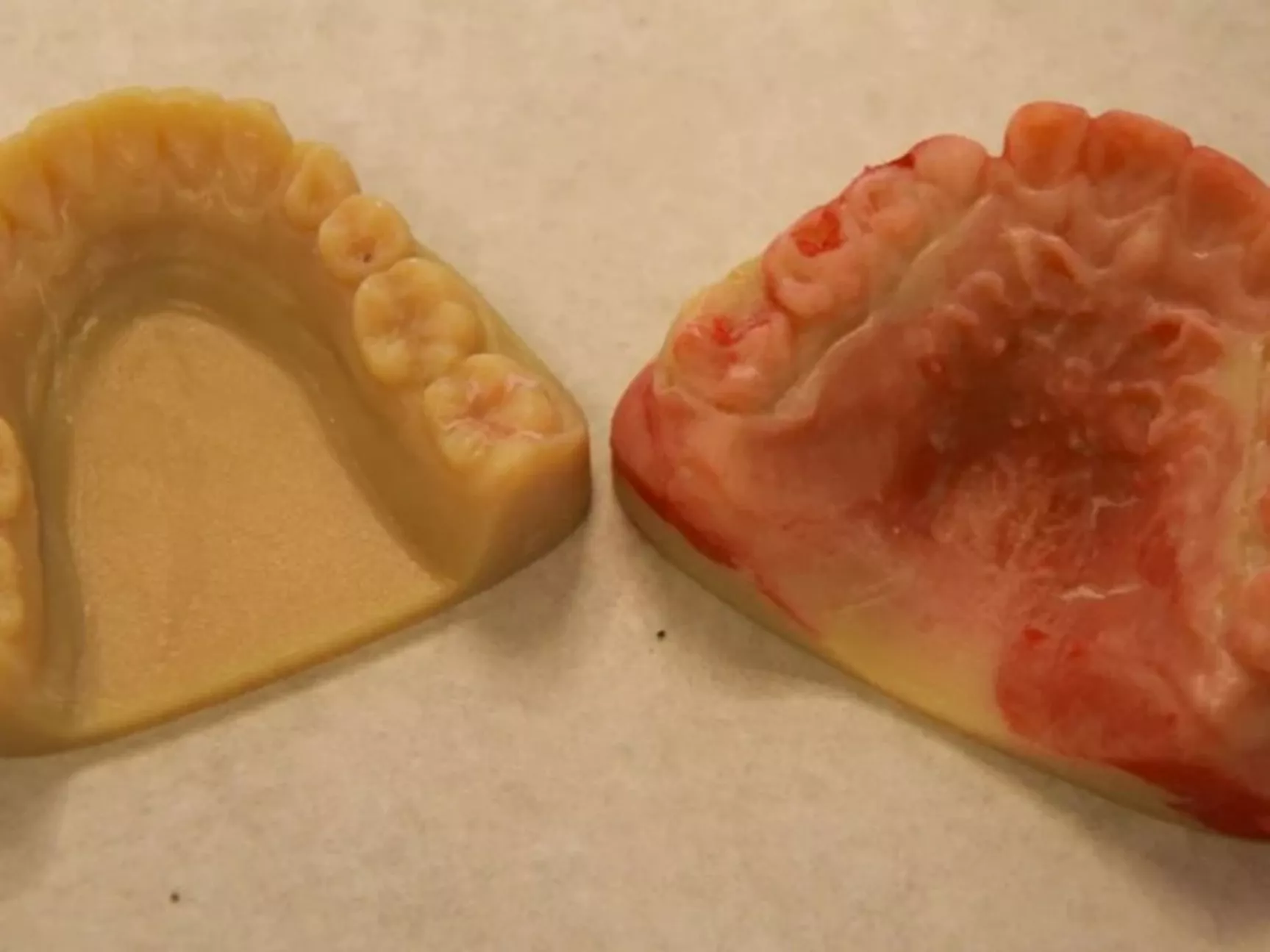
Side-by-side comparison of an upper arch model after processing a Hawley retainer with Separator DM (left) vs. a model without Separator DM (right). The left model is clean and unblemished after the acrylic retainer was removed – no wax or acrylic residue remains. The right model (using traditional separator liquid) shows residual wax/acrylic (stained red) firmly stuck to the surface. Separator DM produces a dramatically cleaner result.
Once you’ve manually cleared the small amount of support from the model’s base and any critical spots, the model is ready for use immediately. The day-to-day steps of wire bending and acrylic packing remain the same – what changes is that you no longer have to fiddle with messy separators or struggle during removal. The time saved per case can be significant.
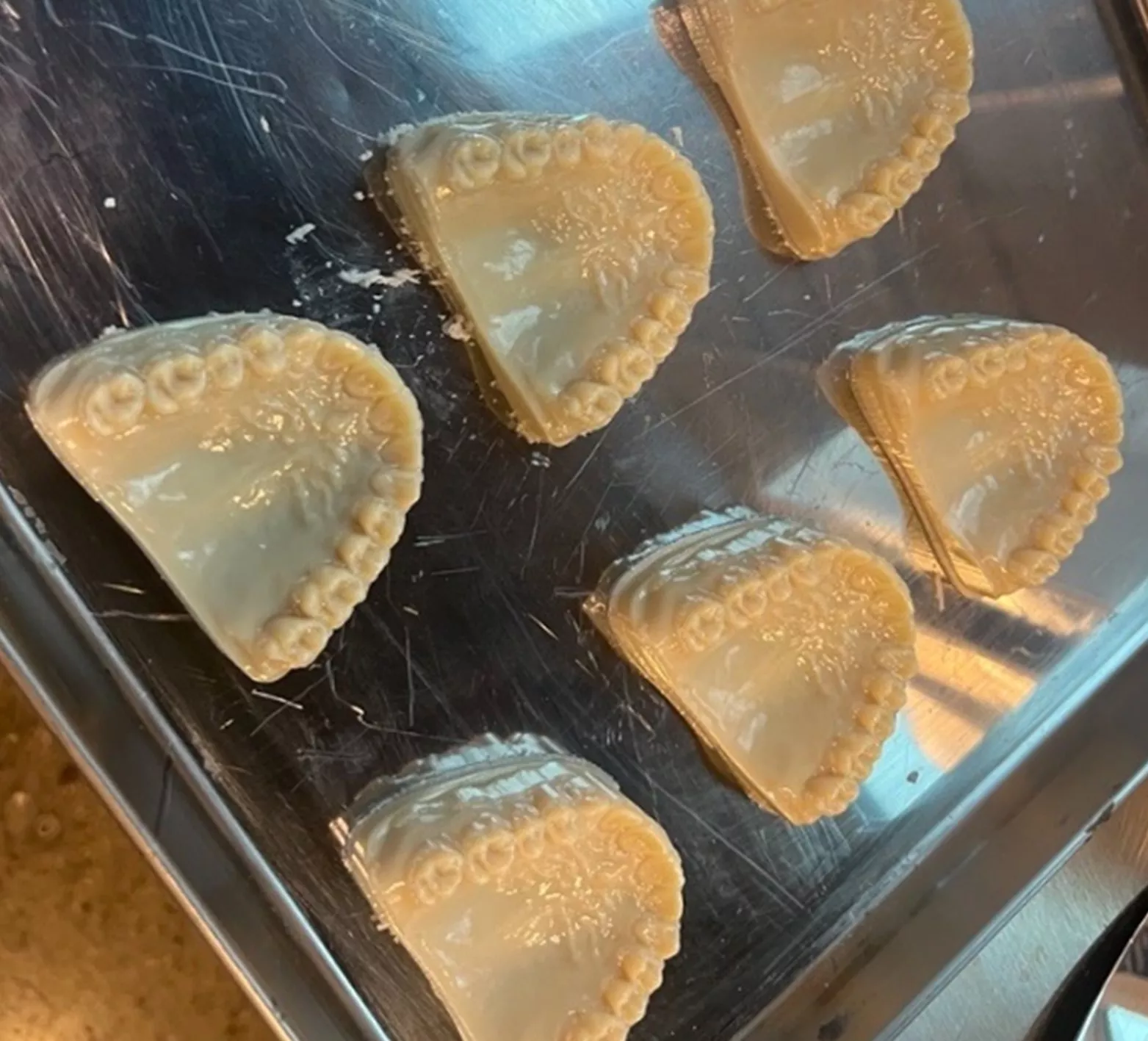
A collection of Separator DM ortho models I printed at GoEngineer's lab in Pleasant Ridge, MI
Separator DM demonstrates how integrating smart materials can elevate digital dentistry. The result is a solution that bridges the gap between digital printing and old-school acrylic processing. By using the J5 or J3 DentaJet with Separator DM, labs don’t have to compromise; they get the precision and repeatability of 3D printed models along with the convenience of easy acrylic processing. It’s truly a best-of-both-worlds scenario that pushes orthodontic lab work into a more efficient, 21st-century workflow.
3D Printing as a Service
GoEngineer offers comprehensive 3D printing services across multiple U.S. labs, equipped with cutting-edge Stratasys FDM, PolyJet, Stereolithography, P3, and SAF technologies for 3D printed prototypes or production parts. Request your quote online today!
Questions?
If you have any questions or would like to learn more about Stratasys’ Separator Digital Material (Separator DM), please contact us.
More 3D Printing News
The Future of Digital Dentistry: Stratasys Solutions
Dental 3D Printing Technology: PolyJet and P3
GrabCAD Streamline Pro Software for Stratasys 3D Printer Fleet Management
How 3D Printing is Helping Manufacturers Fight Back Against Tariffs
DICOM-to-3D Print Medical Models: Methods Used to Compare Accuracy
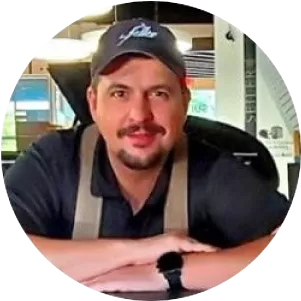
About Richard Cromwell
Richard Cromwell is an Additive Manufacturing Applications Engineer based out of Auburn Hills, MI, having recently joined the team in February 2020. He is a Certified Stratasys Applications Engineer and holds a degree in Technological Science with a specialization in CAD from Oakland Community College in Auburn Hills. Before delving fully into his passion for additive manufacturing and 3D CAD modeling, Richard honed his mechanical design, CAM, and custom fabrication skills while working for over a decade as a renowned craftsman creating custom retrofit piano actions for many of the world’s most prized musical instruments.
Get our wide array of technical resources delivered right to your inbox.
Unsubscribe at any time.
